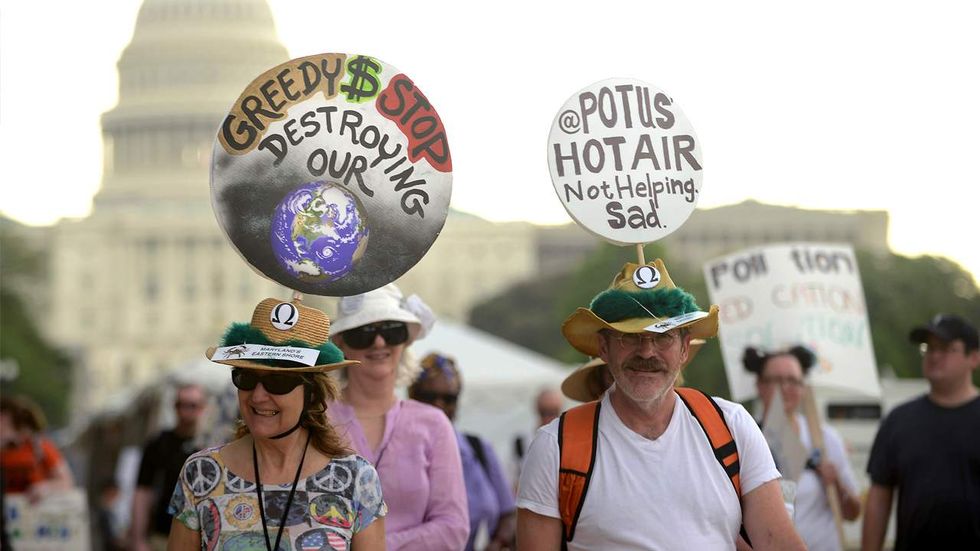
A new academic study shows increased carbon-dioxide levels have had a positive impact on Africa. (Astrid Riecken/Getty Images)

Proponents of the theory humans are primarily responsible for global warming have said for two decades that warmer temperatures would cause significant problems for the people of Africa. Crops would fail, water would dry up, and the lack of stability, coupled with these problems, would cause significant climate-change-related wars.
For instance, in 2015, Newsweek alleged global warming has already caused significant crises in Africa.
“In violence-plagued northern Mali, a desiccated landscape of dust and mud huts where the average rainfall is a third less than it was nearly two decades ago, scholars recently blamed a climate change–induced drought for fueling conflict between Tuareg separatist rebels, who need water and grass for their cattle herds, and government-backed forces. In March, the National Academy of Sciences published a peer-reviewed study stating that ‘there is evidence that the 2007–2010 drought contributed to the conflict in Syria. It was the worst drought in the instrumental record, causing widespread crop failure and a mass migration of farming families to urban centers.’ Some studies suggest climate change will produce permanent refugees.”
These kinds of sky-is-falling analyses rely on short-term views of regional and global climate changes, and they often fail to consider the numerous benefits of warming and/or increased carbon-dioxide levels, as evidenced by a new study showing increased CO2 has “driven” greening in Africa.
According to a study by Martin Brandt et al., published in the journal Nature Ecology & Evolution in May, 36 percent of the continent of Africa became greener over the 20-year period from 1992 to 2011, while only 11 percent became “less green.” Interestingly, the researchers found the increased greening was “driven” by higher carbon-dioxide levels and precipitation, and the decreased greening was largely a result of humans cutting down vegetation.
“Here we used a passive microwave Earth observation data set to document two different trends in land area with woody cover for 1992–2011: 36% of the land area (6,870,000 km2) had an increase in woody cover largely in drylands, and 11% had a decrease (2,150,000 km2), mostly in humid zones,” wrote the authors in their study’s abstract. “Increases in woody cover were associated with low population growth, and were driven by increases in CO2 in the humid zones and by increases in precipitation in drylands, whereas decreases in woody cover were associated with high population growth.”
This study, if accurate, serves as further proof that increased carbon dioxide in the atmosphere is not nearly as dangerous as so many alarmists say. In fact, historically, more-significant problems are linked to climates becoming colder, not warmer. This isn’t surprising, because when temperatures are higher and there is more carbon dioxide present, plants tend to grow better, which means animals and humans have more food to eat.
Justin Haskins